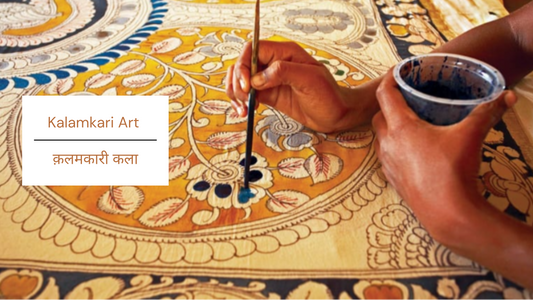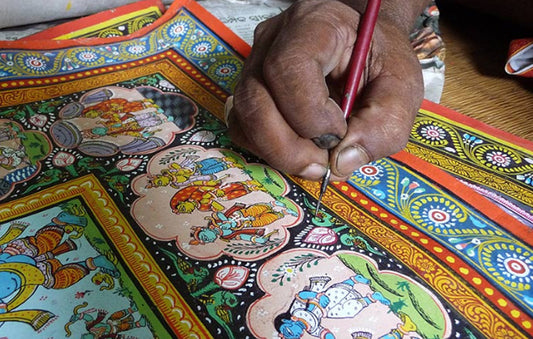Unveiling the Timeless Legacy: The History of Kalamkari Art
Kalamkari, an art form that weaves history, culture, and intricate designs into its very fabric, is a treasure trove of artistic heritage. Let's take a step back in time and embark on a journey through the rich history of Kalamkari, a testament to the enduring spirit of creativity and craftsmanship.

Ancient Origins
Kalamkari finds its roots in the word 'kalam,' which means pen, and 'kari,' meaning work. It is a traditional Indian art form that dates back over 3000 years. The earliest references to Kalamkari can be traced to the ancient cave paintings and sculptures in India, particularly in the temples of Andhra Pradesh and Telangana. These paintings, often found in the temples of Srikalahasti and Machilipatnam, are believed to be the genesis of this exquisite art.
Influence of Persian Art
The art of Kalamkari was further enriched during the Mughal era when Persian artisans introduced new techniques and motifs to the existing repertoire. This influence led to the evolution of two distinct styles of Kalamkari, one from Machilipatnam, known for its fine brushwork, and the other from Srikalahasti, famous for its intricate hand-drawn patterns.
Srikalahasti Style
The Srikalahasti style of Kalamkari takes its name from the temple town where it originated. This style primarily involves freehand drawing with the use of a kalam or pen. The artists would intricately depict mythological stories, epics, and divine figures on fabric. The use of natural dyes was a hallmark of Srikalahasti Kalamkari, and the process was a closely guarded secret passed down through generations.
Mythological Depictions
Srikalahasti Kalamkari often revolved around themes from Hindu mythology, depicting gods, goddesses, and epic tales like the Ramayana and Mahabharata. The colors were bold and vivid, and the detailing was mesmerizing.
Machilipatnam Style
Machilipatnam Kalamkari, on the other hand, has a distinct charm of its own. This style involved intricate hand-painting with tamarind pens, giving it a unique finesse. The artisans from this region often created floral motifs, peacocks, and Persian influences in their designs.
European Influence
With the advent of the British in India, Kalamkari found a new audience. The European market was enamored by the beauty of these hand-painted fabrics. As a result, Kalamkari saw further transformations to cater to this new demand, giving rise to a fusion of Indian and European designs.
Contemporary Revival
In the post-independence era, Kalamkari art faced several challenges. However, with a renewed focus on preserving traditional crafts, Kalamkari experienced a revival. Artisans and enthusiasts alike worked towards preserving and promoting this art form. The use of natural dyes, eco-friendly techniques, and adapting Kalamkari to modern fashion trends helped in its resurgence.
Today's Kalamkari
In the 21st century, Kalamkari continues to thrive, not only in India but across the globe. The enchanting art form has transcended borders and is celebrated as a symbol of India's artistic heritage. It finds expression in various forms, from clothing and home decor to accessories and paintings, captivating art lovers with its intricate patterns and timeless beauty.
The history of Kalamkari is a testament to the enduring appeal of traditional craftsmanship and the adaptability of art over centuries. It's a reminder that the beauty of the past can find a place in the present, and the future, creating a bridge between generations and cultures.
So, as you explore the world of Kalamkari art, remember that each piece carries within it a piece of history, a story waiting to be told, and a tradition that continues to flourish, pen-stroke by pen-stroke.



